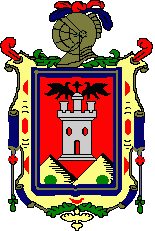Cotopaxi volcano
At 5897 meters above sea level, and rising majestically above the Andean mountains, the Cotopaxi mountain is Ecuador’s highest active volcano - as well as being one of the most active volcanoes anywhere in Ecuador. With an almost perfectly symmetrical cone shape its identifiable sign, Cotopaxi mountain is also a picture book image of Ecuador. The Cotopaxi is highly symmetrical a conical volcano whose glaciers have not affected it much due to the recent origin of these. The inclination of its flanks observes 30º approximately, whereas the diameter of its base is in the 15 kms. The name of the mountain is a voice Cayapa that is disturbed asi ': Boundary , neck; pag , of pagta, sun and if of shi, candy. That is to say, "Sweet Sun Neck". In the old language of the Panzaleos, cotopaxi means "fire Throat". The crater of the volcano is made oval with a diameter of 800x600 m. and a depth of 200 m.s from the edge to the bottom of the same one. This active volcano appeared back in the middle of the Pleistocene between million and 200,000 years on still more old volcanic layers.
The small hill Morurco or Guagua Cotopaxi that is a little to the south more is the surplus of old Cotopaxi volcano when this it had one more an activity more explosive than the present one. Already at the end of the Pleistocene until the present time, the Cotopaxi resumed its activity and constructed the present cone. For 500 years, in historical times, numerous eruptions of the Cotopaxi have been entered that have destroyed near valleys, their last eruption of importance was in 1906, reactivating itself in 1944 and 1975 but with little force.
The explosive character of its eruptions and the great amount of incandescent material have generated numerous mud flows that have arrived until the Pacific Ocean, historically these flows have crossed twelve times by the channel of the Cutuchi River, by the Pita River three times and four times by the Napo River. Nevertheless in prehistoric times they have appeared lahares or alluviums of gravísimas consequences, since for 2,400 years when lahar apparently giant produced by a sliding of great dimensions, it buried great part of valleys of the Chillos and Tumbaco, reaching up to 130 meters on you cause them of the main rivers.
A similar alluvium could not nowadays be possible due to the little amount of ice, the perpetual snow is located today from the 4,900 msnm whereas 2,400 only 4,000 years ago msnm could be located to, which means that the amount of ice and snow was much greater. Many are the dangers associated to this volcano: incandescent lava, deslaves and piroclásticos collapses, flows and of mud and rain of ashes. The greater danger without a doubt is the piroclásticos flows that can dissolve glaciers in minutes and create devastating mud flows which already sometimes happened they have devastated with valleys of the Chillos and Latacunga.
First ascents: It was climbed for the first time in 1872 by the German Wilhelm Reiss and Colombian Angel M. Field of broom, who raised by the southwestern flank. The following year was crowned by four Ecuadorian and another German. In 1877 a disastrous explosion I leave of ice and mud free the North face and many mountain climbers took advantage from this situation and began to raise by this flank. In 1880 the expedition to more important Ecuador never done was carried out by the English Edward Whymper, that had the reputation of being first in raising the Matterhorn in the Alps, considered impossible for the time. Whymper, along with the Carrel brothers (Italian), spent one night encamping in the crater of the Cotopaxi. They made the first ascents to great part of the highest tips of the country: Chimborazo 6,310 m.s, Cayambe 5,790 m.s, Antisana 5,758 m.s, South Iliniza 5,248 m.s, Carihuairazo 5,020 m.s, Sincholagua 4,893 m.s, Cotacachi 4,944 m.s and Sara Urco 4,670 ms.

